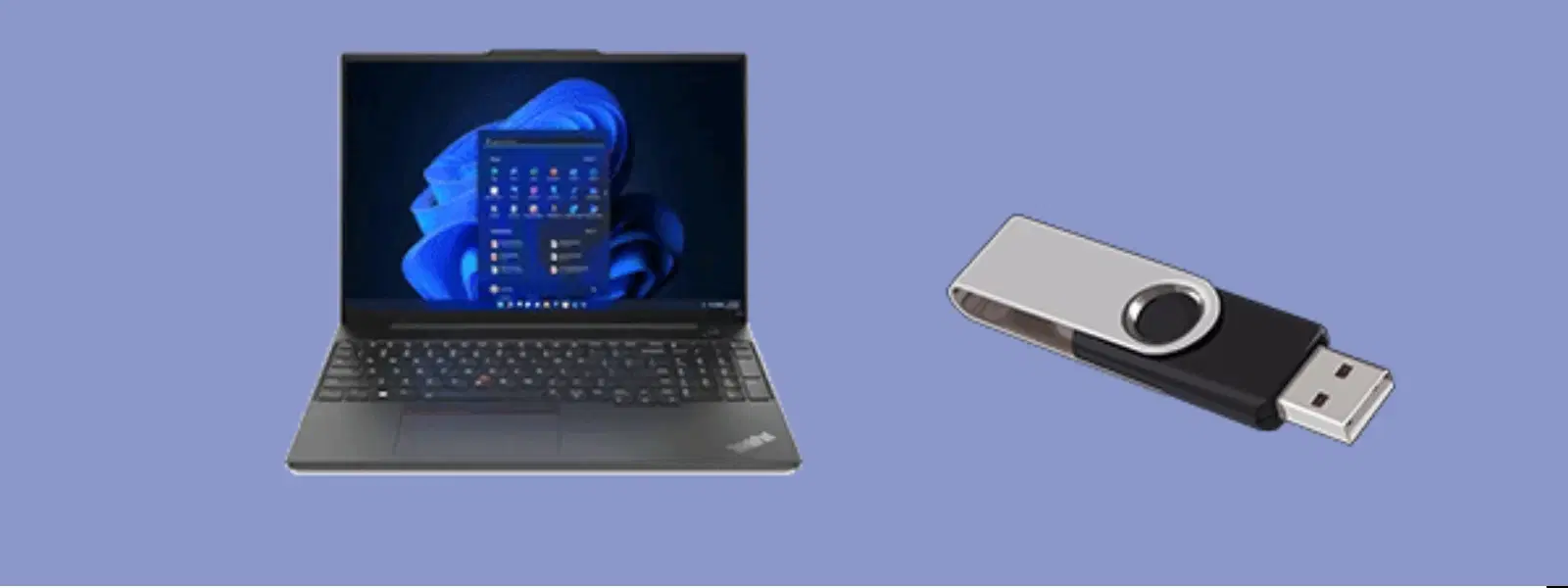
Consumer Electronics
•03 min read
Imagine needing to install Windows but not having an installation disk handy. A bootable Windows USB can be the perfect solution, helping you with installation, troubleshooting, and recovery. In this guide, you'll learn how to make Windows bootable USB step-by-step, ensuring a smooth and hassle-free setup.
Before beginning the process of creating a bootable USB for Windows, verify that you have a USB drive that is at least 8 GB in capacity. Obtain the correct Windows ISO file for your system and select a reliable tool such as the Windows Media Creation Tool or Rufus. It is important to check whether your system runs on a 32-bit or 64-bit architecture before you start.
A high-quality USB drive with ample storage and fast read/write speeds is essential. Depending on the version of Windows, the format requirement may vary – for instance, NTFS is usually required for Windows 10 or 11, while FAT32 might be necessary for some UEFI systems.
Start by formatting your USB drive using Windows’ built-in tools or third-party software like Rufus. Remember to back up any important data stored on the drive, as formatting will erase all existing files. This step ensures that your USB drive is clean and ready for the creation of the bootable media.
For the USB drive to function properly, you must configure your system’s BIOS or UEFI settings. Check your system’s settings and adjust the boot order to prioritise the USB drive. This simple change ensures that your computer will boot from the USB when you need to install or recover Windows.
The Windows Media Creation Tool is a straightforward option to download the Windows ISO file and write it to your USB stick. Follow the on-screen instructions carefully, and be prepared to troubleshoot minor issues such as slow download speeds or errors during the setup process. This tool is user-friendly and designed to minimise errors.
For those seeking an alternative, Rufus offers robust control over the creation process. Launch Rufus, select your USB drive, choose the appropriate ISO file, and confirm the partition scheme that matches your system’s BIOS or UEFI settings. Rufus provides advanced users with flexibility and control, ensuring that the bootable USB is created without complications.
Pro Tip: Avoid Compatibility Issues
Did you know that using the wrong partition scheme (MBR vs. GPT) or file system (FAT32 vs. NTFS) can prevent your USB from booting? Always match the partition scheme to your system’s BIOS/UEFI settings for a seamless experience.
After creating your Windows installation USB, it is important to verify its functionality. Reboot your computer and enter the boot menu to test if the USB drive operates as expected. A successful test will show the Windows setup screen. If you encounter issues, such as the USB not being recognised during boot, recheck your settings.
If common errors occur, solutions might involve reformatting the USB drive or re-downloading the Windows ISO file. The key is to stay patient and meticulously follow each step again. A careful approach will help you to quickly resolve issues and ensure that your bootable USB drive works when you need it most.
Once your bootable USB is ready, it is time to prepare for the actual Windows installation. Knowing what to expect during installation can ease anxiety, especially if this is your first time. Before initiating the installation process, ensure you have backed up all critical data from your target system to avoid any unintended data loss.
Security is paramount. Always verify the authenticity of the Windows ISO file you are using. An authentic ISO helps shield your system against malware or corrupted software. Moreover, store your bootable USB in a safe place, ensuring that it remains available for any future use, whether for troubleshooting or reinstallation purposes.
Follow the steps in this guide, utilising tools like Rufus or the Windows Media Creation Tool to ensure you have a reliable USB drive that meets the necessary requirements.
You can use tools that help load the ISO file onto your USB drive and facilitate the process of making it bootable.
Windows 10 typically requires NTFS for installation, but FAT32 might be necessary for certain UEFI systems.
EXE files are not directly used in creating bootable USB drives; always use the ISO file or official tools available.
Creating a bootable Windows USB is an essential skill for anyone involved in managing devices or troubleshooting systems. By following this careful checklist, you can avoid common pitfalls and ensure compatibility and efficiency in your Windows installation process. The methodical steps outlined here enable a seamless experience, ensuring that whether you are setting up a new computer or recovering a system, your approach is informed and secure.
This guide reflects the commitment to excellence found on Tata Neu, where innovative service and technology unite to provide not just superior products but also valuable insights. Enjoy the benefits of earning NeuCoins with every transaction on Tata Neu, making the process of shopping smart and rewarding while you gear up with essential consumer electronics like these.